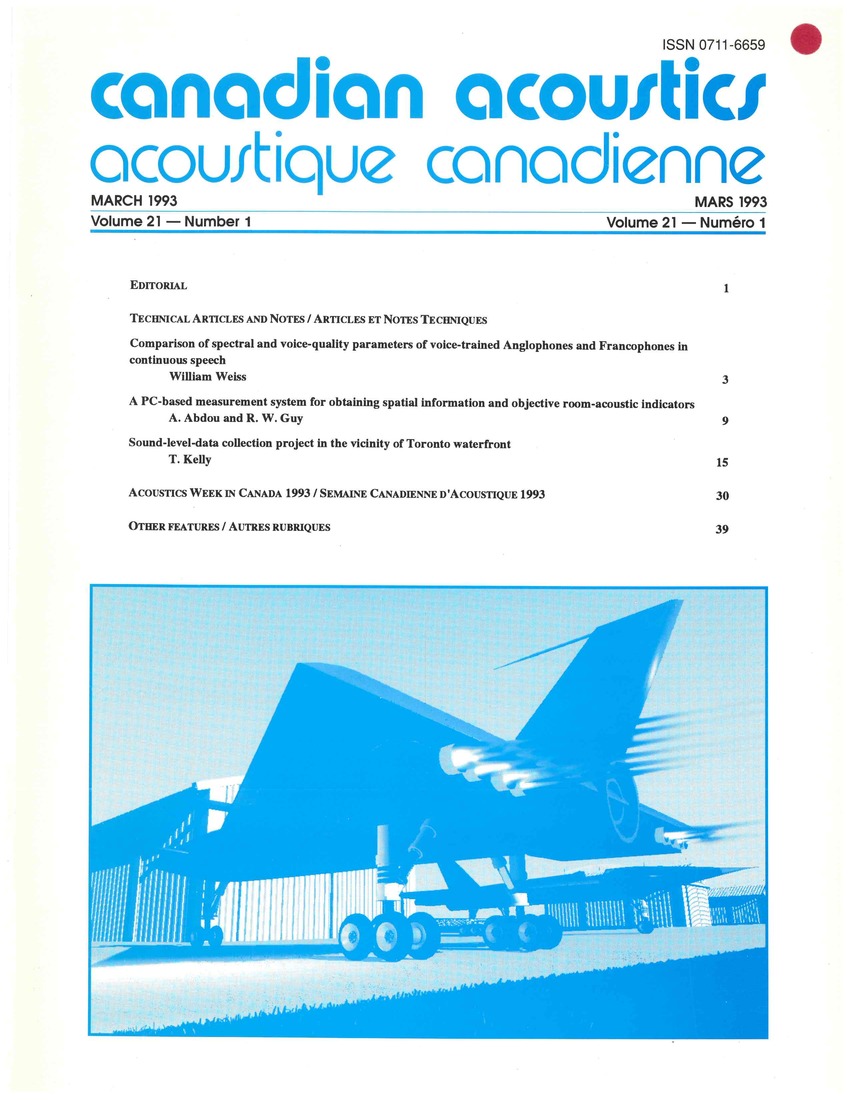Comparison of spectral and voice quality parameters of voice trained anglophones and francophones in continuous speech
Keywords:
spectral analysis, speech analysis and processing, voice trained, anglophones, francophones, continuous speech, untrained, spectral levels, voice quality, F0, F1, 1000 HzAbstract
Continuous speech of 23 subjects was recorded. The group was composed of voice trained (n=11) and untrained (n=12) male and female anglophone subjects. The objective of the investigation was to find out how are spectral levels and voice quality compared to an equivalent group of francophones that were the object of a previous study. Long term spectral analysis was applied to all recorded samples and spectral levels were determined for regions of F0, F1, <1000 Hz (B1K), >1000 Hz (A1K); and the following ratios were computed: 1. ?=F1-F0, 2. ?AB=>1000 Hz-<1000 Hz. Analyses of variance were carried out in order to ascertain differences between trained and untrained subjects and between the linguistic groups. Results show: 1. ?AB greater for trained anglophones than for untrained anglophones. 2. ?AB not greater for trained francophones than for untrained francophones. 3. ?AB greater for trained anglophones than for trained francophones. 4. ?AB the same for untrained anglophones and untrained francophones. 5. Trained anglophones have higher spectral levels than untrained anglophones. 6. Trained francophones have smaller spectral levels than untrained francophones. 7. trained anglophones have significantly higher spectral levels than trained francophones in the higher frequencies. 8. Untrained francophones have significantly higher spectral levels than untrained anglophones in the lower frequencies. 9. There were no significant differences for ?Additional Files
Published
How to Cite
Issue
Section
License
Author Licensing Addendum
This Licensing Addendum ("Addendum") is entered into between the undersigned Author(s) and Canadian Acoustics journal published by the Canadian Acoustical Association (hereinafter referred to as the "Publisher"). The Author(s) and the Publisher agree as follows:
-
Retained Rights: The Author(s) retain(s) the following rights:
- The right to reproduce, distribute, and publicly display the Work on the Author's personal website or the website of the Author's institution.
- The right to use the Work in the Author's teaching activities and presentations.
- The right to include the Work in a compilation for the Author's personal use, not for sale.
-
Grant of License: The Author(s) grant(s) to the Publisher a worldwide exclusive license to publish, reproduce, distribute, and display the Work in Canadian Acoustics and any other formats and media deemed appropriate by the Publisher.
-
Attribution: The Publisher agrees to include proper attribution to the Author(s) in all publications and reproductions of the Work.
-
No Conflict: This Addendum is intended to be in harmony with, and not in conflict with, the terms and conditions of the original agreement entered into between the Author(s) and the Publisher.
-
Copyright Clause: Copyright on articles is held by the Author(s). The corresponding Author has the right to grant on behalf of all Authors and does grant on behalf of all Authors, a worldwide exclusive license to the Publisher and its licensees in perpetuity, in all forms, formats, and media (whether known now or created in the future), including but not limited to the rights to publish, reproduce, distribute, display, store, translate, create adaptations, reprints, include within collections, and create summaries, extracts, and/or abstracts of the Contribution.


